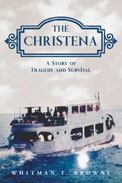
 |
Was she in poor repair? Was she improperly sealed before she crossed the channel between the islands of St. Kitts and Nevis? Did her crew of five receive adequate training in seamanship? Since August 1, 1970, these three questions have been chief among those that haunt the descendants of the 233 passengers who perished when the ferryboat Christena capsized and sank in ten minutes. No one doubted that she was overloaded. She carried at least 330 people, more than double her expressly stated capacity of 155. She belonged to the government of St. Kitts-Nevis—an unwillingly united nation of two islands whose people clamored for independence. The disaster was just one glaring example of the government's generalized indifference to the plight of those it purports to govern and offers those who desire change a cause to champion as they fight for survivors' compensation. But even fifty years can't heal all heartaches.
Although Browne, a native of Nevis, was not directly involved in the Christena accident, he personally knew and was friends with many who did not survive. His carefully researched text discusses three possible causes for the sinking and a haunting theory that a passing ship's captain may have deliberately left potential survivors to drown rather than rescuing them. The humanity and individuality of each passenger, living or dead, figure prominently in the account. The author's painstaking revisions of lists of survivors, the dead, and the missing reflect that importance, as such lists include each known name and place of birth. The poignant firsthand recollections from numerous survivors and their descriptions of the sinking's lasting impact on their lives complete the narrative's strong humanizing tone.